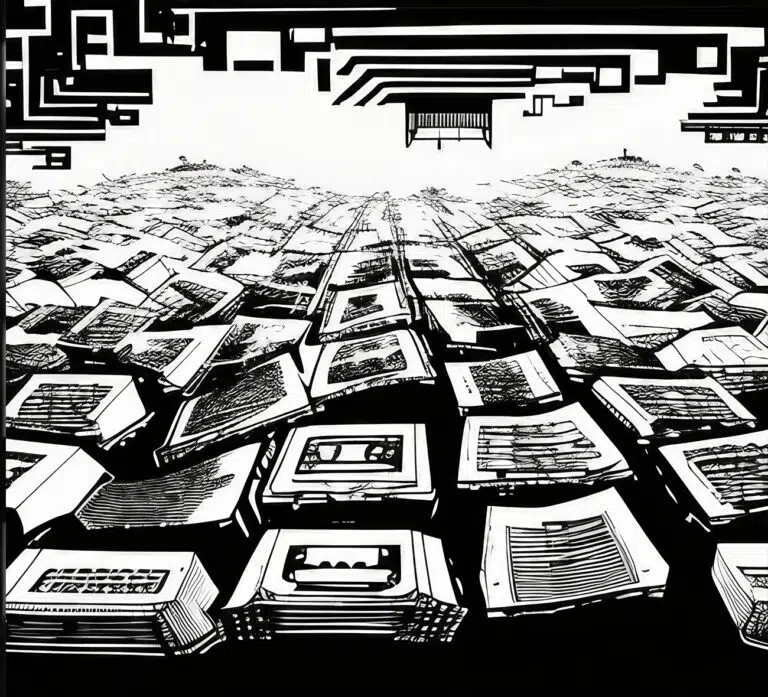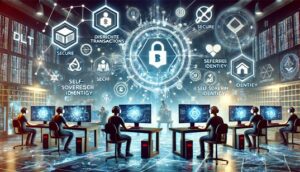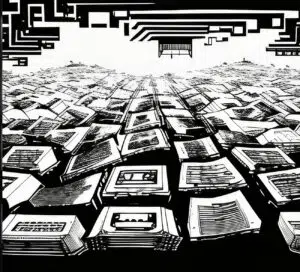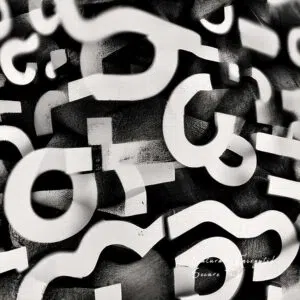Not so long ago, our relationship with media was defined by physical ownership. We hoarded CDs, DVDs, and books like precious treasures, cherishing the tactile experience of holding them in our hands. But as we stepped into the new decade, a revolution in the way we consume media began to unfold.
We found ourselves swept up in the tide of digital streaming services that offered us a never-ending library of music, movies, and literature at our fingertips, 24 hours a day, seven days a week. We no longer had to worry about storing our beloved collections or losing them to the ravages of time. We could access everything we wanted in a matter of seconds, no matter where we were in the world.
However, there was one realm of art that seemed to resist this transformation. For ages, paintings, sculptures, and photography had been tangible objects that could only be admired in galleries or museums. The sheer beauty of these physical creations was so awe-inspiring that it seemed impossible to replicate the experience in a digital format.
But then, the world was hit by the COVID-19 pandemic, and everything changed. As we were forced to retreat into our homes, the digital world became our lifeline. And it was during this time that a new technology emerged that would pave the way for a revolution in art consumption: non-fungible tokens or NFTs.
There was a question that echoed through the halls of the art world: “Are NFTs a new form of art?” It was a question that seemed to have no easy answer, for the concept of NFTs was shrouded in mystery and controversy.
But as the debate raged on, a truth began to emerge: NFTs were not, in fact, an artistic medium or a new art form. Even digital art, which was often associated with NFTs, had been around for decades before the advent of NFTs.
Instead, NFTs were a tool — a powerful tool that could be used to establish ownership and create scarcity. By assigning a unique digital identity to an asset, whether it be a piece of art or a tweet, NFTs could add value to the asset and create a sense of exclusivity.
For artists who poured their heart and soul into creating digital masterpieces, the question of ownership and compensation was a constant source of frustration. How could they be recognized for their work when it could be copied and shared with a few clicks of a button?
This same line of inquiry sparked a captivating conversation that we explored in our article “Is Your Art Worth Anything Without Provenance?”. We’ve talked about the intricate struggles that artists face in the quest for recognition and appreciation.
Going back to what we’re talking about, NFTs emerged as a solution to this longstanding problem. Suddenly, the world of digital art was transformed from a sea of uncertainty into a land of opportunity.
Verifying ownership
Ownership can be a slippery slope. But NFTs provide a way to verify and track ownership of digital art, giving it a value that was both tangible and unique. With each NFT representing a one-of-a-kind digital asset, owning an NFT gives the buyer the exclusive right to claim ownership of the original asset.
Compensating artists for their work
No longer must artists struggle to sell their work in a sea of perfect replicas, for NFTs offer a glimmer of hope. These tokens allow artists to sell their digital creations as unique, one-of-a-kind assets, instantly elevating their value to a level of exclusivity that was previously unattainable. With NFTs, digital artists can finally gain the recognition and financial compensation they deserve, opening up new doors for creativity and innovation in the digital art space.
Providing transparency and security
In the digital art world, trust and transparency are everything. NFTs bring with them an unparalleled level of authenticity and security. Stored on a blockchain, each NFT is intricately linked to a specific piece of art, creating a transparent and easily trackable ownership trail. This level of transparency is a game-changer, eliminating the guesswork and ambiguity that plagues the traditional art market, where authenticity and ownership can often be shrouded in mystery.
With NFTs, buyers and sellers can rest easy, secure in the knowledge that the authenticity of the artwork and ownership of the NFT can be easily verified, thanks to the robust security provided by the blockchain.
With NFTs, artists no longer had to worry about their work being lost in the vast expanse of the internet. They could stake their claim to their creations and be recognized for the brilliance they had brought into the world.
But as with any tool, there were those who wielded it with caution and those who wielded it recklessly. Some saw NFTs as a way to democratize the art world, allowing creators to bypass the traditional gatekeepers and sell their work directly to their fans. Others saw NFTs as a cynical ploy, a way to cash in on the hype surrounding the art world and make a quick profit.
As the story of NFTs continues to unfold, only time will tell which side of the debate will ultimately prevail. But one thing is for sure — the power of NFTs to shape the future of art and ownership is a force to be reckoned with.






